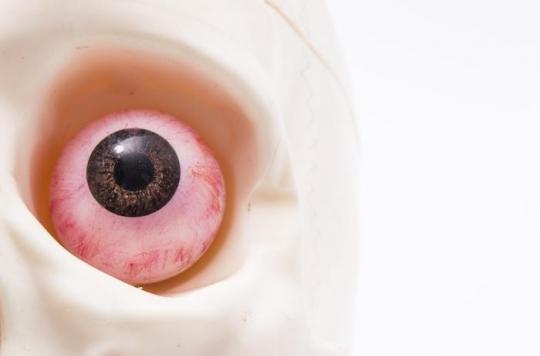In the United States, a woman fractured the socket of her left eye while blowing her nose. A very rare case, caused by a weakening of the skeleton around the eye.

The story could easily appear in an episode of Grey’s Anatomy, but it is very real. A year ago, a 36-year-old woman presented to the emergency room. Her vision is blurry, and pain on the left side of her head and neck is causing her great pain. Earlier today, the patient had temporarily lost her sight at her workplace. Despite the gradual return of visual acuity, swelling around the left eye subsequently developed, as well as bleeding from the left nostril.
Puzzled, the doctors then ask the patient to think about the potential cause of all these misfortunes. After retracing the course of her day, the young woman will finally indicate having temporarily lost her sight… after blowing her nose! The published report in the review BMJ Case Reports will confirm: the mere act of blowing your nose fractured the bones surrounding the left eye, resulting in a fracture of the orbit of the left eye and a fracture of the bone surrounding the eye, called “lamina papyracea “.
A pack of cigarettes a day
Dr Sam Myers, who took charge of this extremely rare case, explains: this woman “must have had a predisposition or a weakening of the skeleton around the eye”, in particular because she smoked about a pack of cigarettes per day. The orbit of the left eye, which is very thin, can in general be fractured following a punch or receiving a sports ball at full speed (baseball, tennis, football, etc.) . This can lead to bruising, swelling, or even redness around the eye, as well as blurred vision – the patient may see momentarily double.
Fortunately, the fracture caused by the nose blowing was relatively easy to treat. No need for surgery, and the patient has fully recovered her sight since going to the emergency room. A year later, however, she still suffers from pain on the left side of her face, the flare-ups lasting about 30 minutes.
Sinking of the eye into the orbit
Sometimes the extent of the orbit fracture is much larger, leading to a risk of more or less voluminous herniation of the intra-orbital contents through the fracture, responsible for the onset (rapid or delayed) of a depression of the eye in the orbit called enophthalmos. If this does not improve after a few weeks, then it is necessary to operate.
Left untreated, a fractured eye socket can lead to loss of vision. “It is important that the clinician examines all orbital fractures with imaging and complete ophthalmologic examination, regardless of trauma history,” conclude the authors of the BMJ report.
.

















